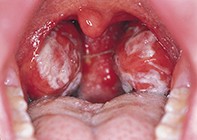Peer Reviewed
Feature Article Haematology
Investigating the patient with a raised white cell count
Abstract
To identify the cause of an elevated white cell count, a careful examination should be performed, a detailed history taken and a blood film examined by a skilled morphologist.
Key Points
- The white blood cell lineage that is most often elevated is the neutrophil; infections, physiological stress and trauma are obvious causes of neutrophilia.
- Important causes of lymphocytosis include viral infections, chronic lymphocytic leukaemia and several rare diseases (e.g. hairy cell leukaemia).
- In the elderly, asymptomatic monocytosis accompanied by significant neutrophilia is a common presentation of chronic myelomonocytic leukaemia.
- Eosinophilia is usually associated with allergic disease or gastrointestinal parasites (e.g. Strongyloides).
- Basophilia is a rare isolated finding; underlying myeloproliferative disorders are the most common underlying causes of persistent basophilia.
Purchase the PDF version of this article
Already a subscriber? Login here.

